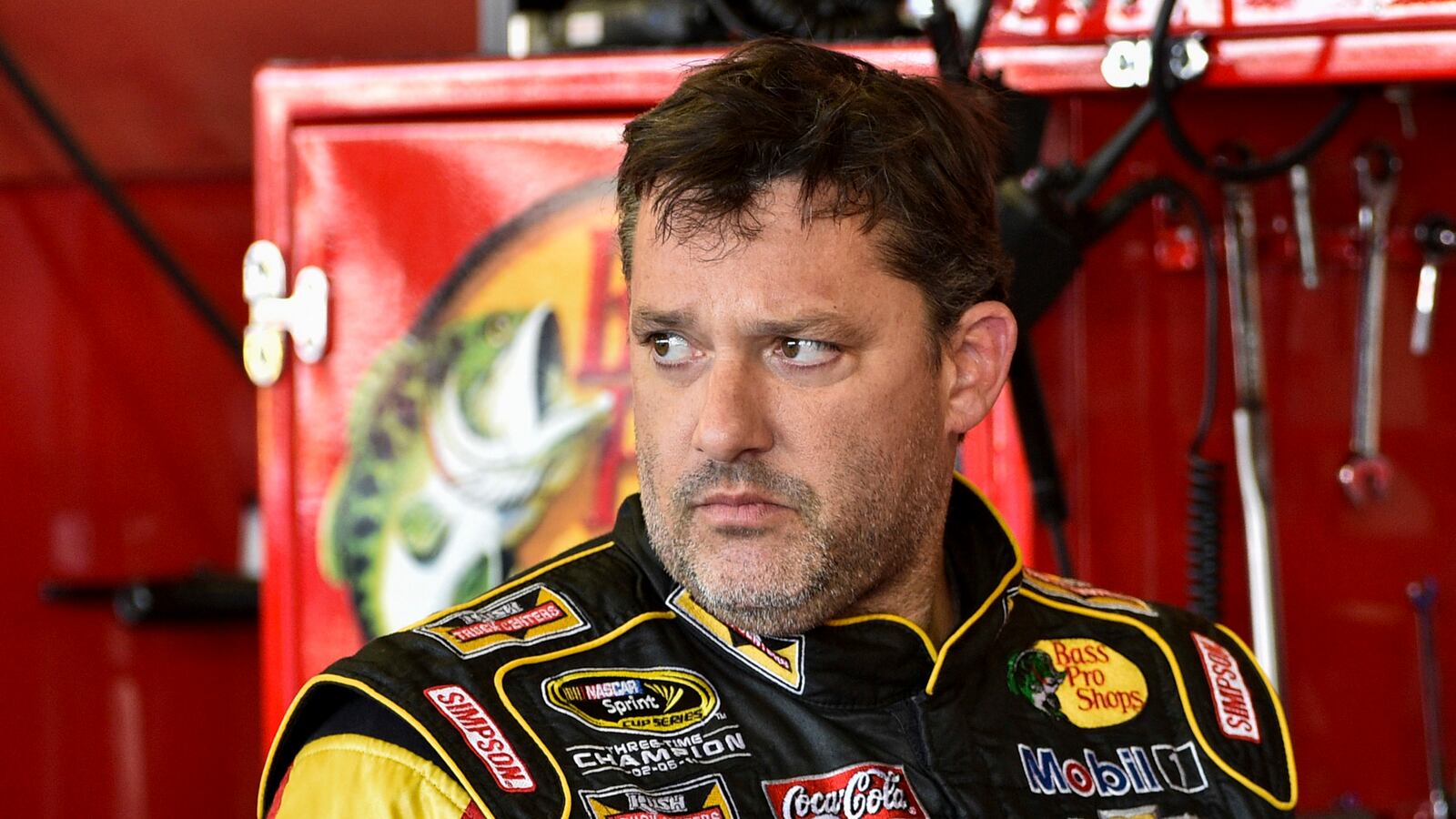We all know how dangerous competitive racing can be. It’s not a regular occurrence, nor is it in any way the reason NASCAR has vaulted to the second-most watched sport in the United States behind football, but when you have drivers barreling down the track at speeds that can approach 200 miles per hour, the question is not if but when a horrific death will occur.
What you don’t expect is for a car to collide with an unprotected driver. But that’s exactly what happened Saturday night in Canandaigua, New York, during a race in the Empire Super Sprint series, as three-time NASCAR champion Tony Stewart fatally struck fellow driver Kevin Ward Jr.
According to reports and eyewitness accounts, Stewart’s and Ward’s cars collided on a turn along the rail, the result of an aggressive but wholly legal maneuver by Stewart that sent Ward’s vehicle spinning out of control.
The caution flag came out, but an irate Ward, instead of getting back in his car and getting it to safety, headed toward the center of the track, jabbing his finger and presumably looking to challenge Stewart. After nearly being hit by the two preceding vehicles, Ward was clipped by the back wheel of Stewart’s car and dragged and sent flying into the air. Forty-five minutes later, he was dead.
You can watch a video of the incident here, but be warned, it’s gruesome.
As of this writing, no formal charges have been filed. In a statement Sunday afternoon, Ontario County Sheriff Philip C. Povero said: “This is right now being investigated as an on-track crash, and I don’t want to infer that there are criminal charges pending. When the investigation is completed, we will sit down with the district attorney and review it. But I want to make it very clear: There are no criminal charges pending at this time.”
For a while, it looked as if Stewart would compete as scheduled in a Sprint Cup race at Watkins Glen on Sunday, but he ended up withdrawing, saying in a statement:
“There aren’t words to describe the sadness I feel about the accident that took the life of Kevin Ward Jr. It’s a very emotional time for all involved, and it is the reason I’ve decided not to participate in today’s race at Watkins Glen. My thoughts and prayers are with his family, friends and everyone affected by this tragedy.”
Just to make the incident even more awful, Ward’s parents were at the race when he was killed. They too have released a statement:
“We appreciate the prayers and support we are receiving from the community, but we need time to grieve and wrap our heads around all of this.”
The question being asked now is whether there was any intent on Stewart’s part. In the video above, it appears that right before he collided with Ward, Stewart gunned his engine, causing the car to swerve or at least fishtail.
There may be a number of reasons for such a move beyond pure malice. The dirt track allowed for far less maneuverability than Stewart may have been accustomed to, writes Motorsport.com editor in chief Steven Cole Smith. Also, Stewart may not have seen Ward at all:
“I have driven winged sprint cars, and as you can imagine, visibility to the side is horrible. Ward was wearing a mostly black fire suit and a black helmet…Stewart may have hit the gas, but you steer sprint cars with the throttle more than with the steering wheel. The idea that he accelerated trying to hit Ward is beyond the pale.”
The Sporting News spoke with Tyler Graves, a friend of Ward’s who, understandably, disagrees: “I know Tony could see him. I know how you can see out of these cars. When Tony got close to him, he hit the throttle. When you hit a throttle on a sprint car, the car sets sideways. It set sideways, the right rear tire hit Kevin.”
Stewart’s brash, reckless driving style and combative persona have fueled the rush to judgment. As Slate’s John Swanburg writes: “Stewart drives the paint off his car from the moment the green flag waves. And he doesn’t take kindly to people not playing by the rules, or at least the rules as he interprets them. (Rule No. 1: If my car is faster than yours, get out of my way, or expect a love tap on your rear bumper.) This, too, is old school.”
Stewart’s take-no-prisoners, borderline-unhinged attitude is what’s made him alternately reviled and beloved. Deadspin has compiled a series of clips of his disputes with other drivers, but it would be a huge mistake to extrapolate guilt based on any armchair psychology.
But believe me, I get that impulse. When something as hideous as this occurs on the field of play—like Paul George’s leg exploding during a basketball scrimmage, of all things—there’s at least a measure of comfort to be found in the purgative rage of certainty. Blame him. If he’s punished to the full extent of the law, then if nothing else, we can at least say justice has been served. But we really don’t know what happened. We may never know.
That runs contrary to one of the reasons that people are so drawn to sports to begin with. Whether—as Jim McKay used to intone every Saturday in the intro to ABC’s Wide World of Sports—it’s the thrill of victory or the agony of defeat, the outcome of a game is a known, clearly definable thing, instead of the perpetually frustrating shades of gray in which most of life is colored.
If nothing else, that clarity makes sports a healthy form of escapism. And at a moment in history in which the world can seem as if it’s teetering on the edge of violent collapse, with senseless brutality turning into the new normal, an incident like Ward’s death, where there are no easy solutions or explanation, feels like even more of a sucker punch to the gut.






